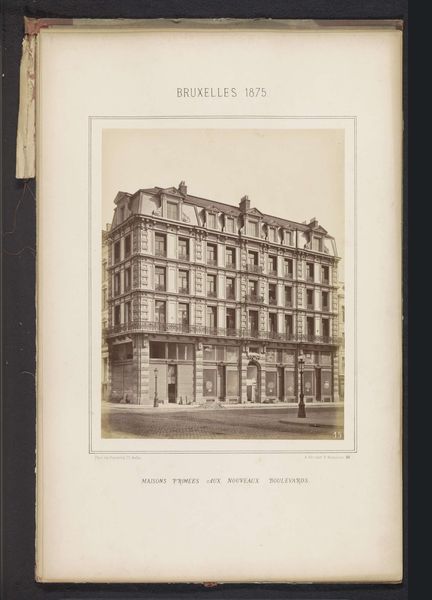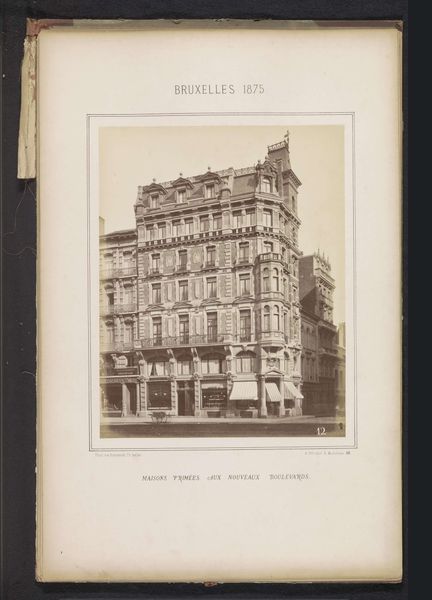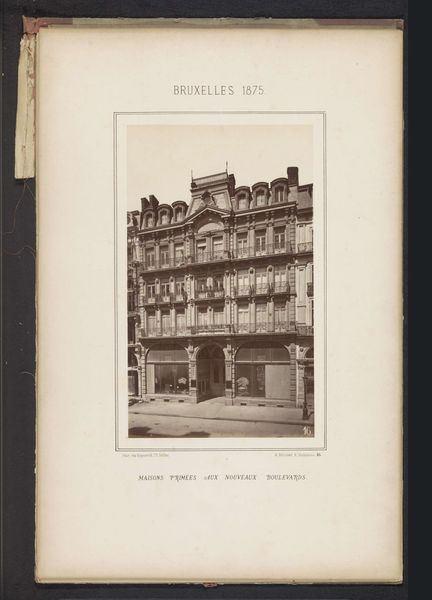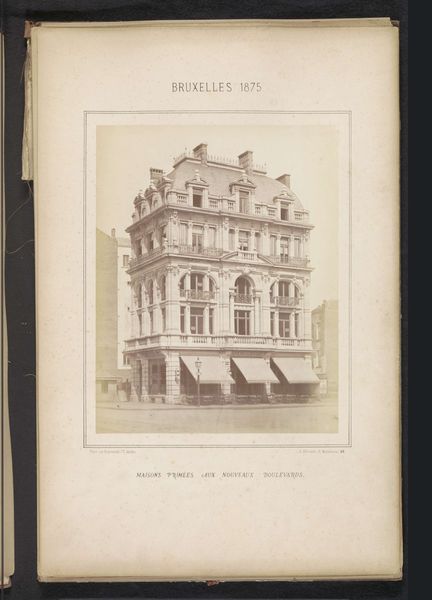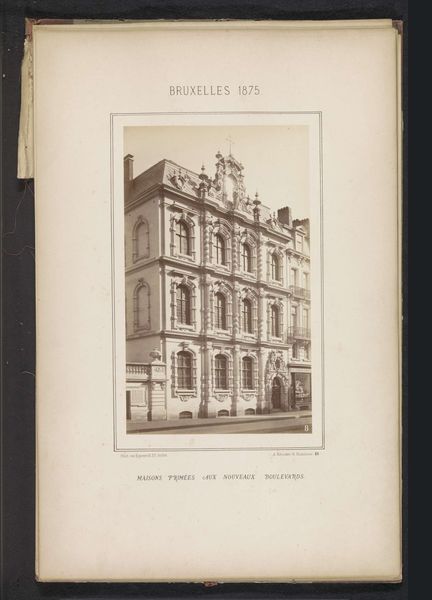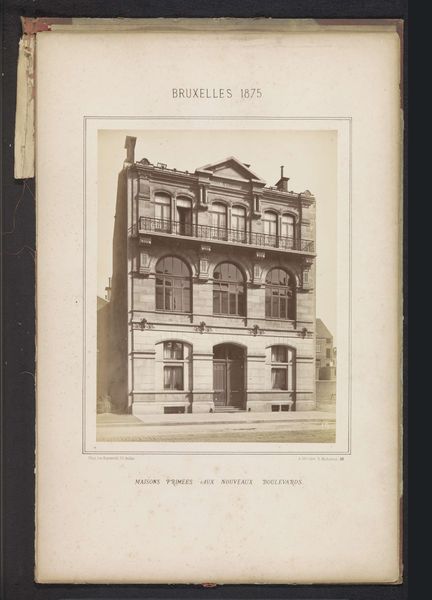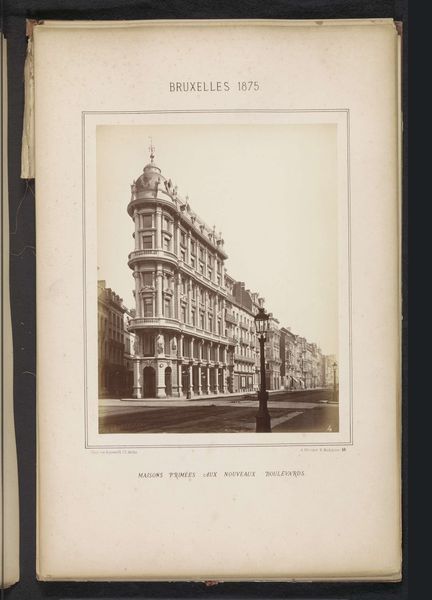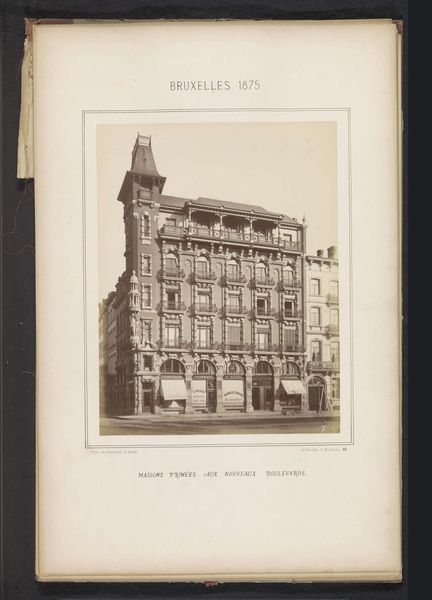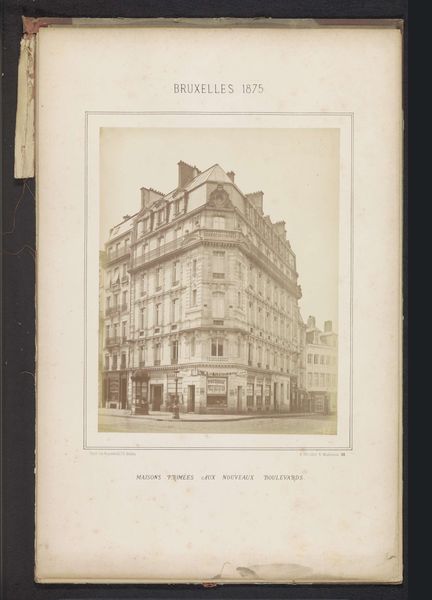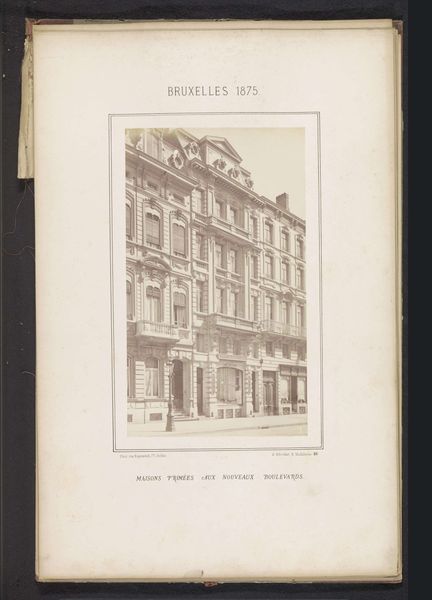
Dimensions: height 264 mm, width 210 mm
Copyright: Rijks Museum: Open Domain
Curator: This is a photograph from 1875 by Alexandre de Blochouse titled "Exterieur van het gebouw op Place de la Brouckère 17 te Brussel," or Exterior of the building on Place de la Brouckère 17 in Brussels. It’s a beautifully rendered cityscape of the period. Editor: My initial impression is that the building, and even the light in this photo, feels rather formal. Austere, even. Curator: Well, consider the historical context. Brussels in the 1870s was a city undergoing massive urban renewal, driven by capitalist expansion. This building would likely have been part of that process—prime real estate on new boulevards, the inscription tells us as much. Editor: So it reflects that kind of...industrial progress narrative? Who was meant to occupy these spaces, and at what cost? Curator: Probably Brussels' rising bourgeoisie, engaging in newly available forms of commerce. It’s hard to ignore the labour required to erect such an elaborate façade: the quarrying, carving, and transporting of stone in the era of early photography. A burgeoning professional class benefitted from these large scale construction and urban planning projects. Editor: It is all quite fascinating. I find myself dwelling on that classical statue perched at the very top – such an overtly gendered symbol of triumph overlooking the city. I wonder what conversations about gender and power dynamics were ongoing at the time? The materials feel imposing but perhaps the facade also conveys an aspiration for something. Curator: Yes, perhaps a monument to the material conditions enabling societal transformation at the time. Even the photographic process itself, a relatively new technology, underscores that. The print provides a durable, reproducible image—a record of progress that can be consumed and disseminated. Editor: A permanent, arguably idealized record, too. This single photograph condenses complex relationships between commerce, class, labour and aesthetic ideology that still resonate today. It provides a tiny portal into a moment in history when these material changes rapidly began to change city life. Curator: Indeed. It reminds me of the complex layering of economic, political, and technological factors involved in urban development that’s as relevant today as it was in 1875.
Comments
No comments
Be the first to comment and join the conversation on the ultimate creative platform.
